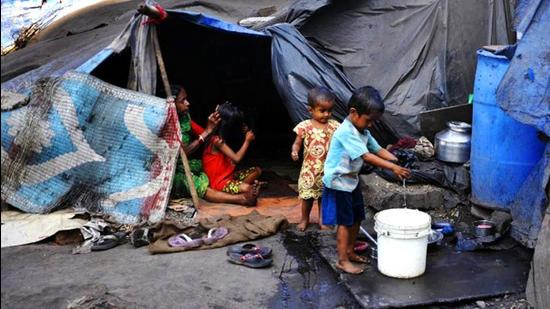An integrated method to measure poverty
Measuring a nation’s welfare by the size of its economy and, therefore, concentrating on achieving GDP growth is damaging. NITI Aayog’s new national multidimensional poverty index can change that
How many people in India are so poor that they are deprived of the basic needs of modern life? India now has the means to get a more meaningful idea of what that figure is, as a guide to the goals that the country must set for its economic growth.

NITI Aayog created India’s first national multidimensional poverty index (MPI). The report has found that 25% of Indians are multidimensionally poor. Among the indicators included in the index are nutrition, education (not just years of schooling but school attendance), bank accounts (without which it is not possible to live a modern life), and assets.
The MPI is intended to be used to draw up “comprehensive reform action plans”. But drawing up plans is one thing. Implementing them is another. This is borne out by the fact that, in the new MPI, three states are notorious for poor governance, and, therefore, ineffective implementation — Bihar, Uttar Pradesh, and Jharkhand. They have the highest number of multidimensionally poor citizens. Two of the smallest states, Sikkim and Goa, and Kerala came out on top with the lowest number of multi-dimensionally poor.
The MPI is based on the National Family Health Survey conducted between 2015 and 2016. The prime minister’s major welfare schemes had not had a chance to make an impact by then, so the index provides a baseline for measuring their successes and failures. This measuring will throw up lessons that can be learnt which are not applicable only to the specific schemes.
For instance, the government claims the remarkable achievement of constructing more than 100 million individual household lavatories in rural India under the Swachh Bharat scheme. The stress that the government has put on that claim — which has been challenged — has given critics grounds for alleging that the scheme has concentrated exclusively on constructing lavatories (ie, implementation) and is no better than previous schemes which failed to eradicate open defecation (through awareness). Valid indications of the success of Swachh Bharat will be provided by using the MPI as a baseline to assess its impact on sanitation and health.
If the wisdom of measuring poverty in the way that the MPI does becomes accepted, the limitations of the other ways of measuring it will be understood. A measure in common use is the poverty line, a line below which an individual lacks the financial resources to afford a basic minimum standard of living. It’s merely a financial measure and ignores the many other reasons why lives are impoverished.
Measuring a nation’s welfare by the size of its economy and, therefore, concentrating on achieving Gross Domestic Product (GDP) growth is damaging. It distorts policies, exacerbates inequalities, and does not take into account environmental costs.
In his book, People, Power, Profits, Nobel Prize-winning economist, Joseph E Stiglitz blames the 2008 financial crisis for equating economic growth with greater prosperity, with that prosperity turning out to be “a house of cards or more precisely a mountain such as poor health, lack of education, unbalanced diet, and so on”.
Simon Kuznets, one of the economists who first developed the system of national accounting, warned against using only measures such as GDP as indicators of prosperity. He once wrote, “Distinctions must be kept in mind between the quantity and quality of growth, between its costs and its returns, and between the short and long run.” Kuznets was not saying that the US shouldn’t grow — and it would be manifestly insane to suggest that India’s economy shouldn’t grow.
It was vice-chairman of NITI Aayog, Rajiv Kumar, who once said to me “Growth is necessary, it is not sufficient.” NITI Aayog has now given India the means to assess the insufficiencies of its GDP growth.
The views expressed are personal
Continue reading with HT Premium Subscription




